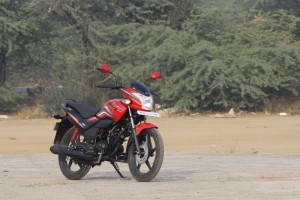
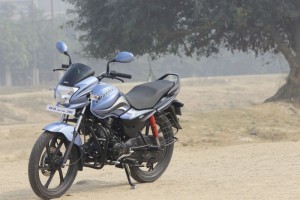
Hero MotoCorp’s Passion gets a welcome refresh for 2018, with a bump in capacity and two variants
Story: Anosh Khumbatta
Photography: Saurabh Botre
Introduced as a step up from the bare-bones yet extremely successful Splendor in Hero’s 100-cc commuter line-up, the Passion was the stylish option for image-conscious customers willing to spend a bit more, without sacrificing the reliability, ease of use, fuel efficiency, and practicality that were the hallmarks of the original Splendor. Now, for 2018, Hero have refreshed the Passion brand with two new motorcycles, the Passion Pro and Passion X Pro, and we recently got to spend some time with both these bikes on the streets of Delhi.
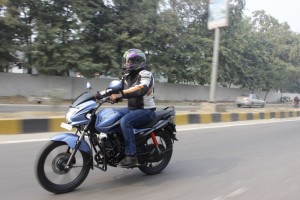
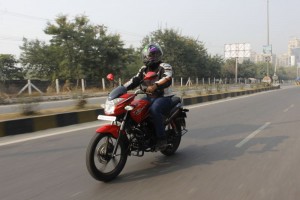
Both motorcycles come across as no-nonsense, utilitarian commuters, but while the Pro stays true to the familiar curves and flowing lines of the original Passion, the X Pro gets quite a few stylised elements. These include the body-coloured mirrors, shapely headlight within the bikini fairing up front, plastic tank shrouds for a meatier look and slightly broader tubeless tyres. From the rider’s seat, the most apparent difference is in the way the instruments are presented. Both bikes feature a large central speedometer, flanked on one side by a digital display for fuel, odo and trip meters, and with the tell-tale lights for neutral, high beam and turn signals on the other side. While the instrumentation on the Pro looks somewhat featureless and drab, it is clear that a lot more thought has gone into the development of the meters on the X Pro. The centrally placed speedo uses a large blue font and a needle that lies at rest vertically at the six o’clock position, the digital display and panel for the tell-tale lights have been incorporated intelligently into the design, and the chrome surround that encompasses all these elements finishes off what is quite an attractive dash on the X Pro.
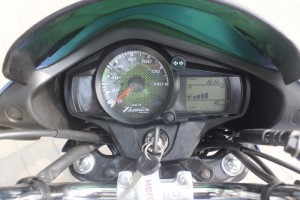
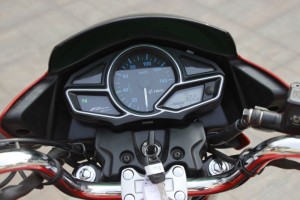
Both the new Passion models are powered by the same 109-cc, air-cooled single, mounted within a double cradle frame. The engine makes 9.5 PS at 7,500 rpm, 9.0 Nm of twist at 5,500 rpm, and is mated to a four-speed gearbox. On the move the engine revs up freely while gear-shifts engage positively without any hidden neutrals showing up, although the gearbox did feel a little notchy at times. Suspension duties are taken care of by a conventional telescopic fork up front and five-stage adjustable shock-absorbers at the rear, and ride is comfortable and cushy over most surfaces.
Since I got to ride these bikes on the streets of Delhi, I was able to experience them in the urban environment they are designed for. I spent most of my time filtering through traffic in third and fourth gear, and was quite happy to see how easy it was to manoeuvre these light, nimble motorcycles through tight spaces. On a stretch of open road I did see the speedo needle climb to over 80 km/h, but vibrations start creeping into the seat, foot-pegs and handlebars at anything above 60 km/h. Braking duties on both bikes are taken care of by 240-mm disc up front and a 130-mm drum at the rear, and these anchors are sufficient for these motorcycles. The riding position on both bikes is upright and commanding, and provides a clear view over slower-moving traffic.
In an effort to boost fuel efficiency, Hero have equipped the Passion twins with their propriety ignition stop-start system, or ‘i3s’, as they call it. The system switches off the engine as soon as you release the clutch in neutral at a stop light and automatically restarts the engine the moment you pull in the clutch to engage first gear. The system can also be switched off in case it gets too intrusive while negotiating bumper-to-bumper traffic.
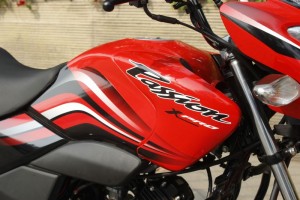
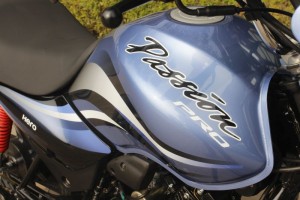
Although these bikes are very similar, and share the same platform, there are a few differences that need to be highlighted. The most prominent of these is the fact that the X Pro gets a smaller fuel tank, with a capacity of 9.2 litres to the Pro’s 11 litres, giving the Passion Pro approximately 100 kilometres of additional range between fill-ups. At 1,967 mm, the Passion X Pro is five mm longer than the Pro, has a longer wheelbase, and, at 778 mm, has a marginally lower seat height than the Pro’s 781 mm, while both bikes share the same 165-mm ground clearance. At 119 kilograms fuelled up, the X Pro also weighs three kilograms more than the Pro.
In choosing between these two bikes it basically comes down to the willingness to pay for the added style and slightly premium feel that come with the X Pro. Looks are subjective and may not appeal to all, and several prospective customers might choose to save a bit of money and get the Pro, with all the utilitarian benefits and the practicality of the larger fuel tank. Hero have not yet announced the pricing of these two new machines, and we will bring you this and a more in-depth review when we get these bikes for a comprehensive road test.


Leave a Reply